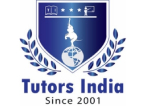The US and the UK Master’s Part / Chapter-wise Dissertation Writing Service

Then You’ve Certainly Reached the Right place
Application of Theory of international business – A Case Study of McDonald’s
McDonald’s background:
The world’s most respected and recognized brand, McDonald's’, was started by Ray Kroc in 1954, in California, USA. It was Richard McDonald and Maurice McDonald who established the company in 1937. Both of them are brothers. First, they opened in the food processing technique and the assembly line technique in Pasadena, California. Then a man who sells milkshake mixer named Ray Kroc, in 1954, found the opportunity in the field and then bargained the franchise for $ 950 such that he had the exclusive right of franchise the company in the USA. At that time the other companies franchised to a rate of $ 50,000. He also had 1.9% as a service fee from the sales, and then 0.5% of the sales were to the McDonald brothers. It was later in 1961 the price was $ 2.7 million.
The company has now expanded its wing to more than 100 countries having about 20,000 restaurants, and about 80% of them are franchises. The success story includes the establishment of 30,000 franchises in more than 100 countries and daily serving about 47 million people. The revenue that is generated annually is $15 billion. The local people of the respective regions own more than 75% of the restaurant in their region. The famous menus of the company are Chicken McNuggets, Big Mac, Egg McMuffin, fries, and Quarter Pounder. The company also involves itself in so many social service activities, sponsoring events, sports, etc.
The company’s first venture towards the international market was Canada in 1967. Soon after that, the license for Eastern Canada was obtained by George Cohen in the year 1968. The McDonalds’ established by Cohen was more lucrative than any other franchise outside the USA with a network of 640 restaurants. Franchising was the key for McDonalds’ for its international success. Thus, having connections with the local people, the company was able to bring the local people with respect to the US brand culture in both products as well as service.
Theories of international business:
The word Internationalization refers to the marketing strategy customization according to different regions of the world based on their national, cultural and regional differences such that the specific markets can be targeted. Thus the countries should be grouped in terms of technological, economic and political similarities
According to Ohmae (1989) "large companies must become more global if they hope to compete. They must change from companies that treat their foreign operations as secondary to companies that view the entire world as a single borderless market". The ability to globalize is the key for success when the market is more similar and global Levitt (1983).
According to Czinkota and Ronnenken (1995), the multinational companies must know how to take care of the marketing strategy regarding selling, distributing and serving the need of the market demands. The needs of the local market can be satisfied only by adjusting and altering the determinants of the marketing mix (Czinkota and Ronnenken, 1995).
According to Taylor (1991), the companies must utilize both globalization and internationalization elements for creating competitive advantage. It is very important to hit the maximum. The company should “think global and act locally.” The company’s structure should fit the international environment as well as the flexibility to execute the strategic goal.
For an international business to develop in terms of its expansion over the globe, the international theory plays an important role. According to this theory, the uncertainty with the expansion of overseas decreases gradually when the interest towards the market develops (Johansen & Vahlne, 1977 and 1990). The theory in terms of the risk aversion explains about the expansion of the companies in abroad should take place only when the marketing options in the homeland gets exhausted. Also, the expansion should be done first in the countries that have a similar marketing place as such the home country in terms of marketing strategy, cultural, etc. When that becomes successful, the company can be established in other countries too. According to the Economic theory, the company will have best opportunities in all markets. Thus, in the case of McDonald's,’ there is no other choice than moving outside.
Business Structure influence:
The business strategy of the company is terms of the geographic proximity. The website of the company would ask for the country of the user so that it can give details according to the country. The company is divided into five groups based on the geographic location; most of its revenue being generated from Europe & USA. The important strategy that the company should follow is to maintain its position in the established countries as well as starting new outlets in other markets. This is due to the fact that the countries differ in their taste and requirements. Thus local development in the geographical areas is also important. Thus the products must be tailored according to the country’s requirements. Thus according to Jim Skinner, the company cannot be commanded by a single button for the entire world. But the company followed the motto of Quality service, cleanliness, and value all over the country. It also includes the principles of fast service, standard hygiene, and affordable price. Thus they keep on launching new products according to the company.
A Case study of McDonald’s
The company has increased its sales by changing the ambiance of the restaurant by changing hard wood floors, ceilings with wood beam, arm chair and including new menus like a brochure, expresso, etc. likewise in Canada the breakfast was according to their traditions. The company had protested in Israel because the Muslim countries do not prefer eating pork and thus the dishes were served with cheese. The people also verified the kitchen of the restaurant of thus gave the halal certificate which ensures the absence of pork. Also in India the Big Mac, a lamb product was served as Maharaja Mac. Similarly, in Malaysia and Singapore, the inspection was carried for ritual cleanliness. Thus, the products of the company vary worldwide.
External environment:
The main factors that affect the business strategy of the company are:
- Social problem
- Environmental problem
- Cultural problem and
- Technical problem
Social problems:
Now as days people take care mainly of their health problems. The living standard of the people has increased in a dramatic range. The foods that are served by the McDonald’s are considered to be junk foods, and they might cause obesity and other related problems. In addition to that other companies started to offer foods that do not affect the body. Thus the company has started to serve salads and other menus that are lighter.
Environmental problems:
The company has also adapted strategies to protect environment such resource conservation, recycling and waste reduction. These works of McDonald’s are recognized by institutions like the National Recycling Coalition, Audubon Society, Keep America Beautiful, the U.S. Environmental Protection Agency and Conservation International.
Cultural problems:
The commitment of the company towards the diversity is not only an ethical and moral issue, which also includes the business issue (McDonald’s, 2005). Thus diversity plays the integral role in the company. The company has worldwide customers and franchise that belong to a different religion, ethnic group and varied culture. In spite of all these diversities the company is able to manage and expands its business adapting the local flavors and tastes.
Technological problems
The company has also developed in the technological aspect in addition to serving different menus. The people are allowed to access wireless internet connection in the restaurant which attracts not only the youth but also the working professionals.
Conclusion:
Thus, to conclude a company might lose its market when it is not able to adapt itself to the environment and act according. This makes the company stand in its position amidst all its competitors. The McDonalds’ have now started in increasing the sales in the existing restaurants and also simultaneously opening new ones. The company follows new strategies to attract people and thus building up their success and growth of the company.

Researchers to mentor-We write your Assignments & Dissertation
With our team of researchers & Statisticians - Tutors India guarantees your grade & acceptance!
About serviceReferences
Czinkota, M. & Ronnenken (1995), International Marketing, 2nd ed., Dryden Press, Chicago, IL.
Doyle, P. (1994), Marketing Management, Prentice-Hall, Hemel Hempstead. Fifield, P. and Gilligan, C. (1996), Strategic Marketing Management, Butterworth-Heinemann, Oxford.
Kotler, P. (1994), Marketing Management, Prentice-Hall, Englewood Cliffs, NJ.
Levitt, T. (1983), The globalization of market", Harvard Business Review, pp. 92-102.
McCarthy, J. (1975), Basic Marketing: A Management Approach, Irwin, Homewood, IL, p. 98.
McDonald's Corporation (1998), The Annual 1998.
McDonald.com Retrieved online from http://www.aboutmcdonalds.com/mcd/our_company.html
Ohmae, K. (1989), Managing in a borderless world, Harvard Business Review, May/June, pp. 152-61.
Sandler, D.M. & Shani, D. (1991), Brand globally but advertise locally? An empirical investigation, International Marketing Review, 9 (4), 18-29.
Taylor, W. (1991) The logic of global business, Harvard Business Review, March/April, 90-105.
Vignali, C. et al. (1999), various, British Food Journal, 101(5/6).

Full Fledged Academic Writing & Editing services
Original and high-standard Content
Plagiarism free document
Fully referenced with high quality peer reviewed journals & textbooks
On-time delivery
Unlimited Revisions
On call /in-person brainstorming session
More From TutorsIndia
Coursework Index Dissertation Index Dissertation Proposal Research Methodologies Literature Review Manuscript DevelopmentREQUEST REMOVAL


